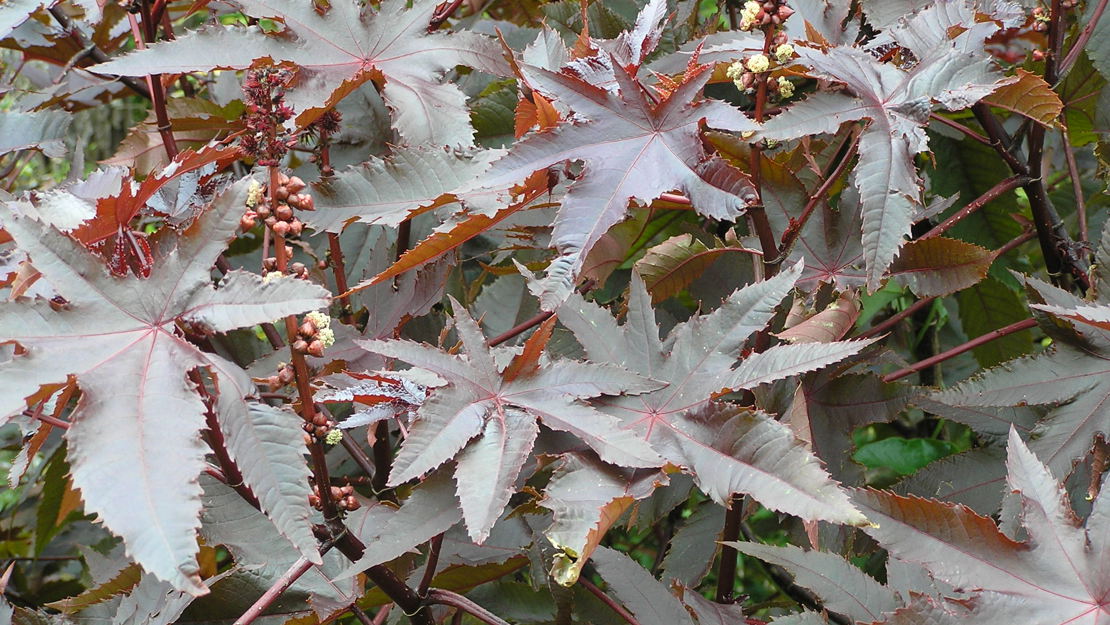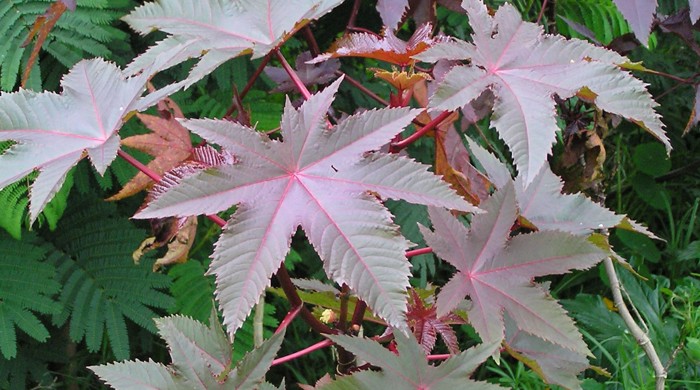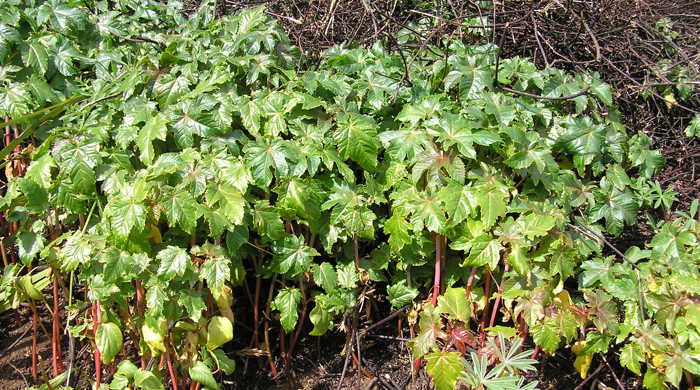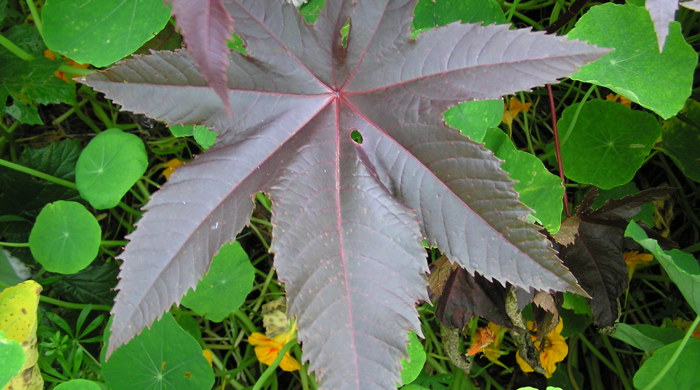Ricinus communis
Castor oil plant
Family: Euphorbiaceae
Origin: Africa, Asia

Regional Pest Management Plan (RPMP) status
- Whole region — Sustained control
- Hauraki Gulf Controlled Area Notice pest
General description
Suckering perennial shrub or small tree < 4 m tall. Stems are hollow, branching and hairless. Leaves are large, alternate, glossy green/red/purple/brown, palmate and serrated. Flowers are red/green and borne in inflorescences. Seed capsules are spherical, greenish and spiny.
What you need to know
To help protect our environment:
- You must not breed, distribute, release or sell castor oil plant within the Auckland region.
- You must not plant castor oil plant within the Auckland region, unless you are transferring an existing plant on your land to another location within the boundaries of the same property.
- You must destroy any castor oil plant on land that you occupy if it has been planted in breach of the above rules and you are directed to do so by an authorised person.
Habitats
Open habitats, disturbed sites, wasteland, riparian margins, gardens.
Dispersal
Seeds dispersed by explosive dehiscence and water. Vegetative spread from adventitious shoots.
Impact on environment
May outcompete and prevent revegetation of plants in disturbed habitats, pasture and cleared forestry plantations. Extremely poisonous to humans, livestock, native fauna and pets. Strongly allergenic.
Control
Site Management
Follow up treated areas 3 times per year. Encourage natural regeneration of native plants or replant treated areas where possible after 2-3 treatments to establish dense ground cover and minimise reinvasion.
Recommended approaches
Physical control
Method: Dig out.
Plant parts requiring disposal: Seeds.
Disposal options: Remove to greenwaste or landfill if practical.
Biocontrol
Biocontrol is currently not available for this species.
Community agrichemical control recommendations
No qualifications: Cut stump and paste freshly cut base of stems with double strength glyphosate gel or cut stump and spray freshly cut base with 200ml glyphosate green per 1L of water.
Certified Handler/Experienced agrichemical user: Foliar spray with 200ml glyphosate green per 10L of water and 20ml penetrant.
Safety notes
Extremely poisonous, especially seeds.
Caution: When using any herbicide or pesticide please read the label thoroughly to ensure that all instructions and safety requirements are followed.






